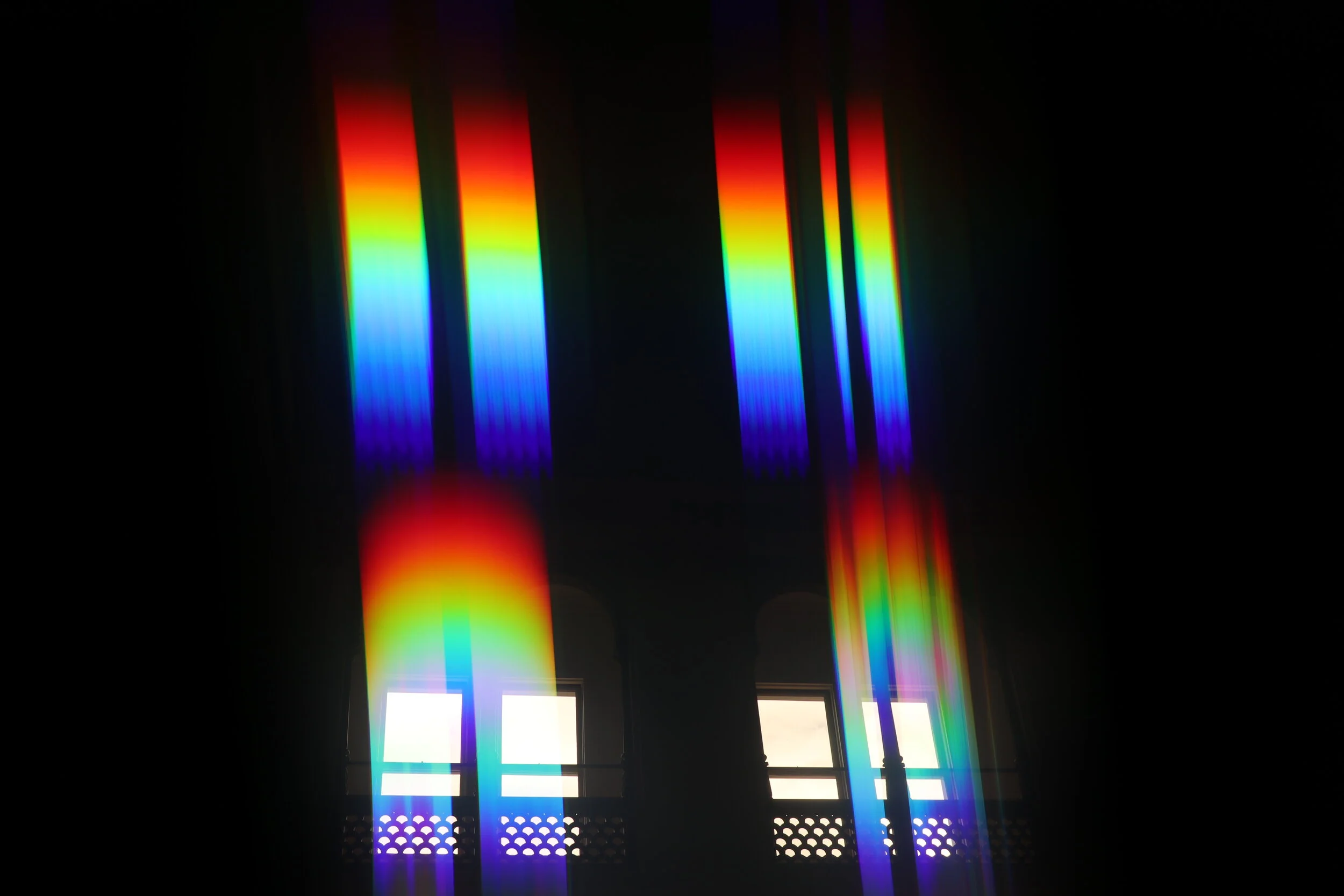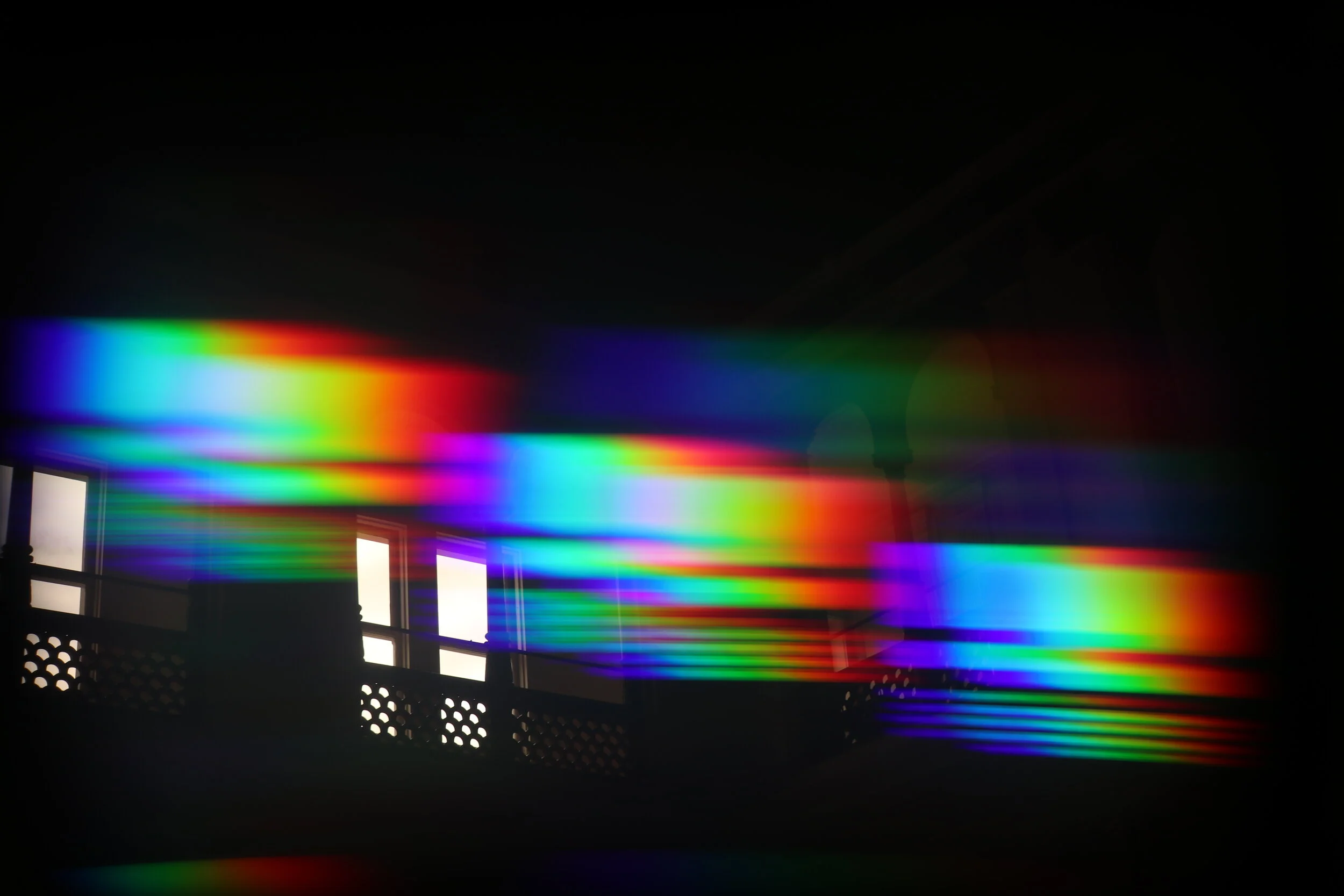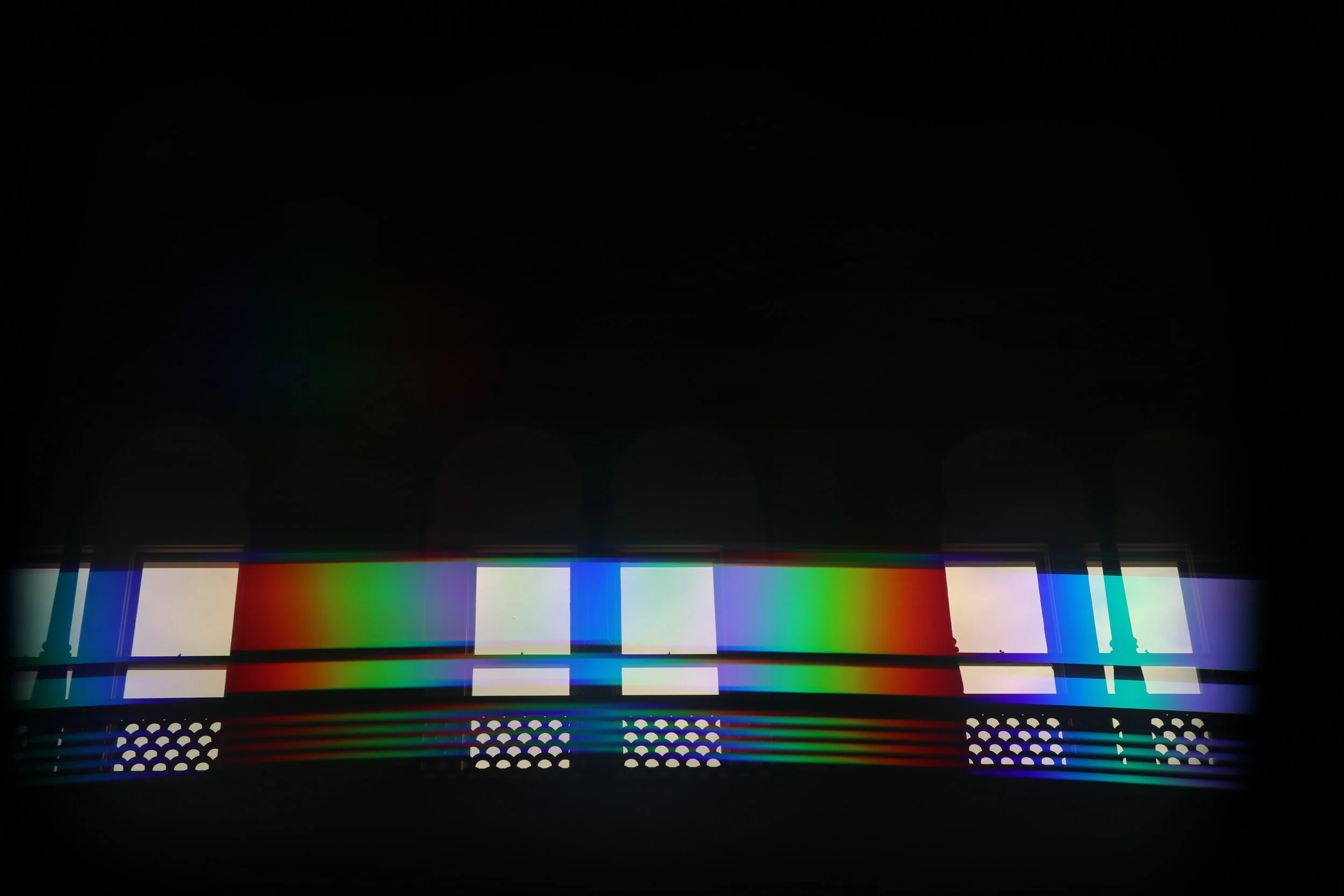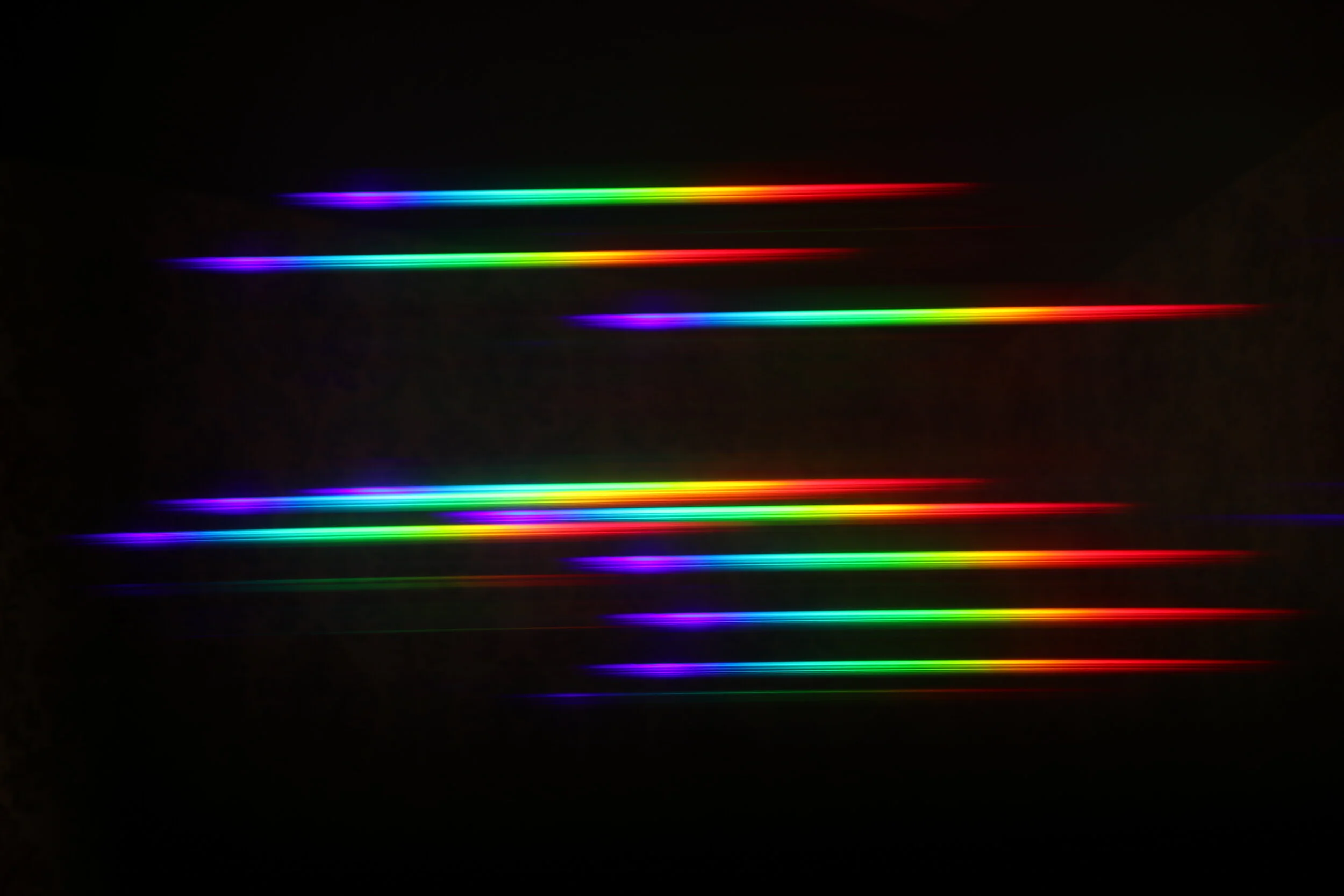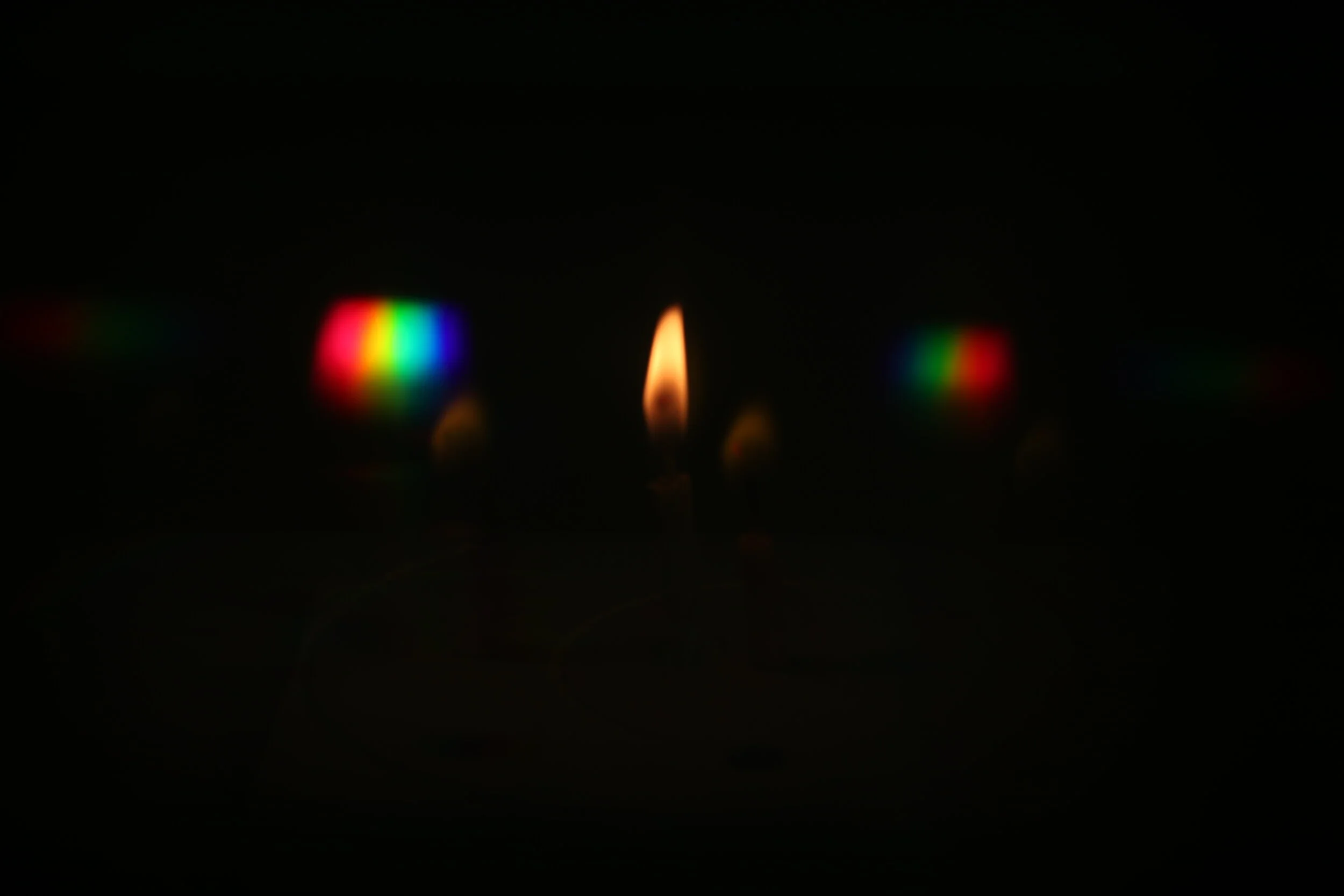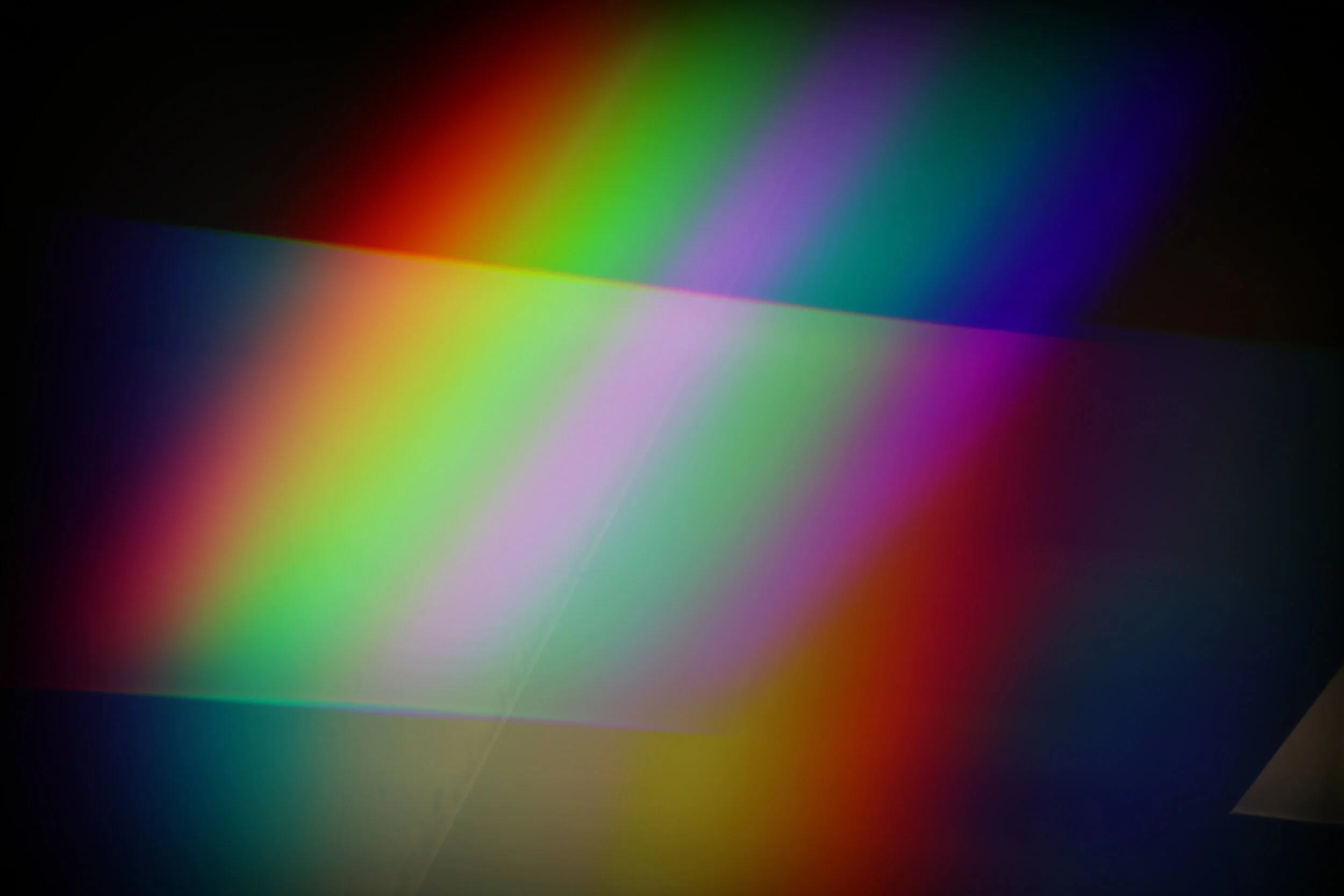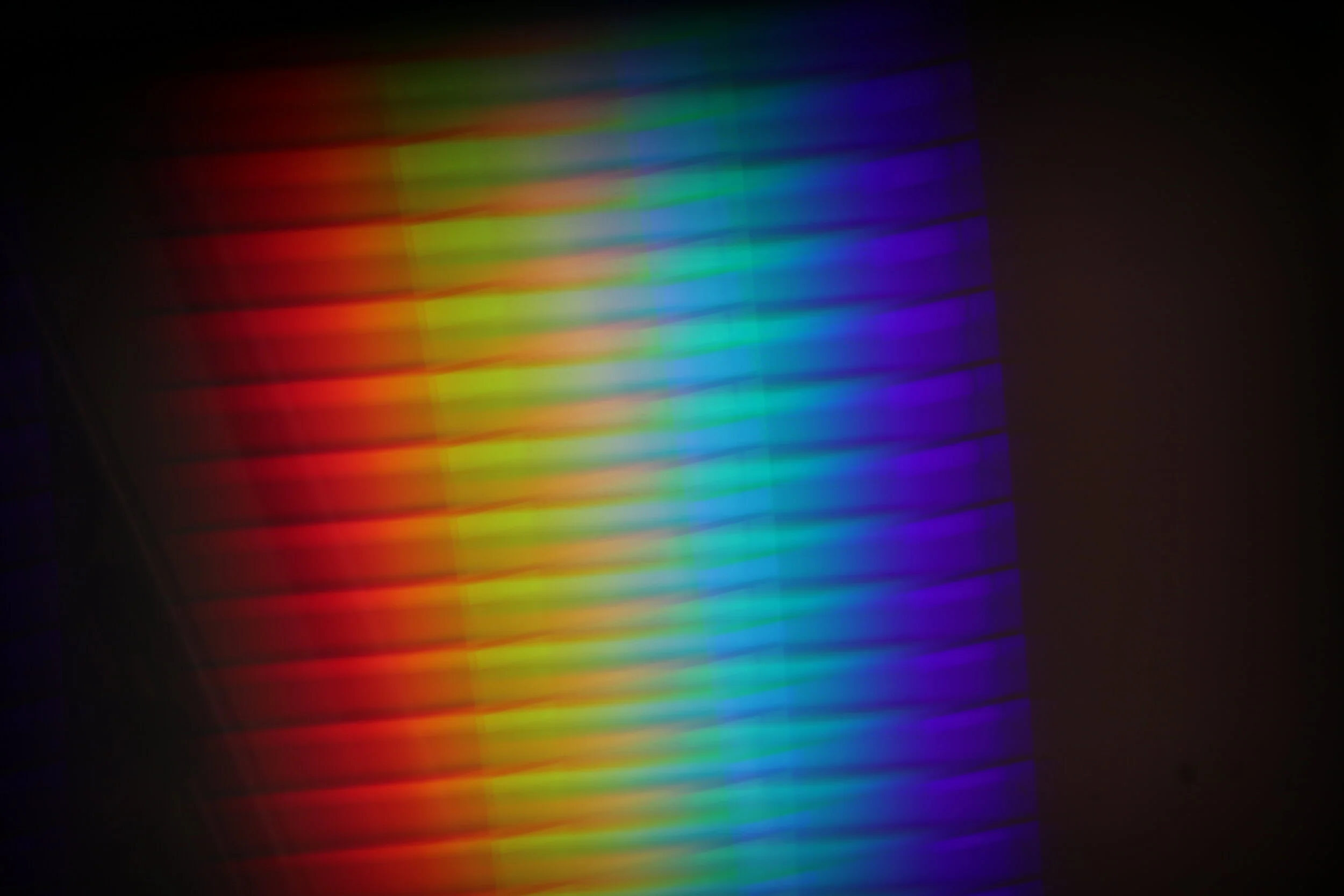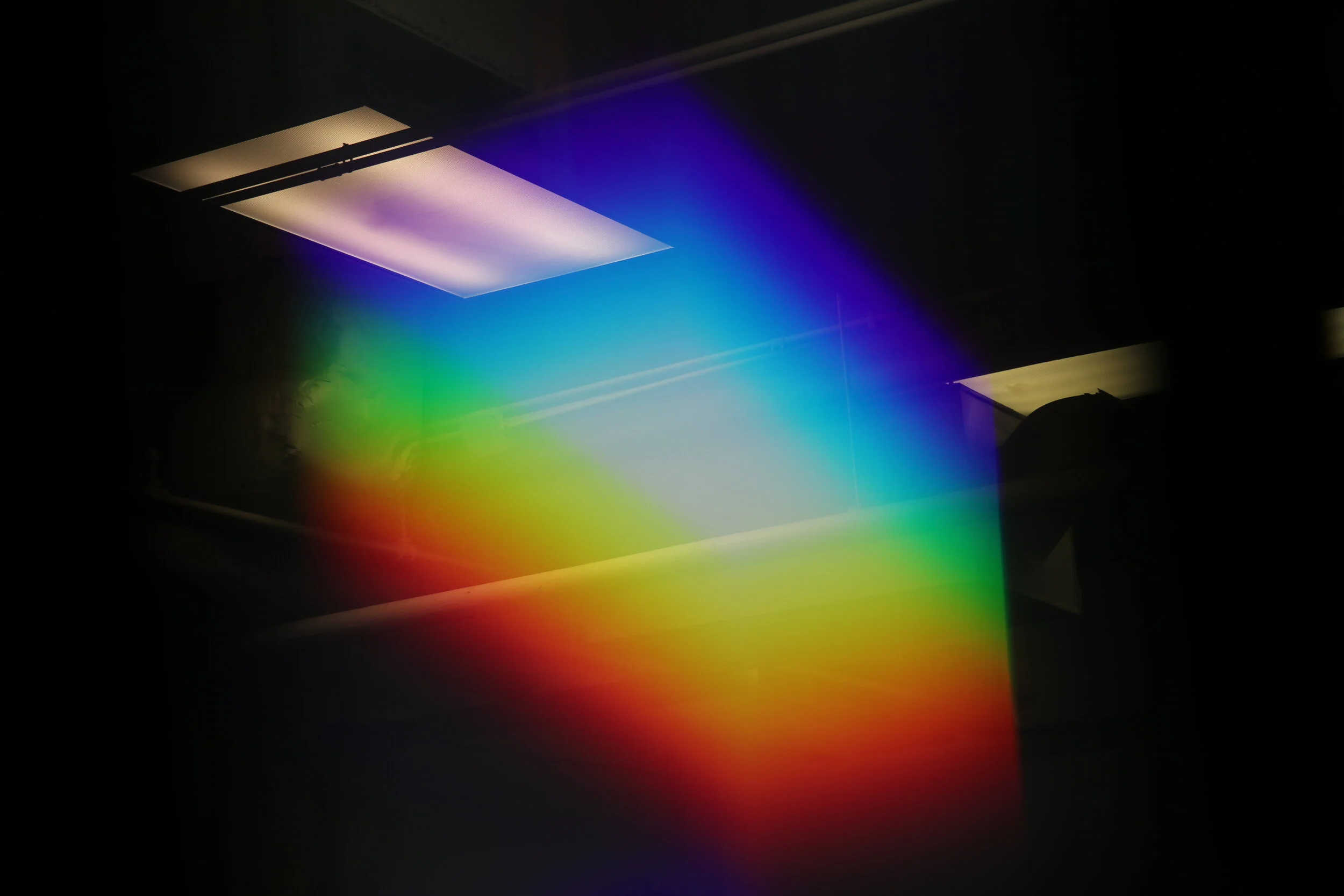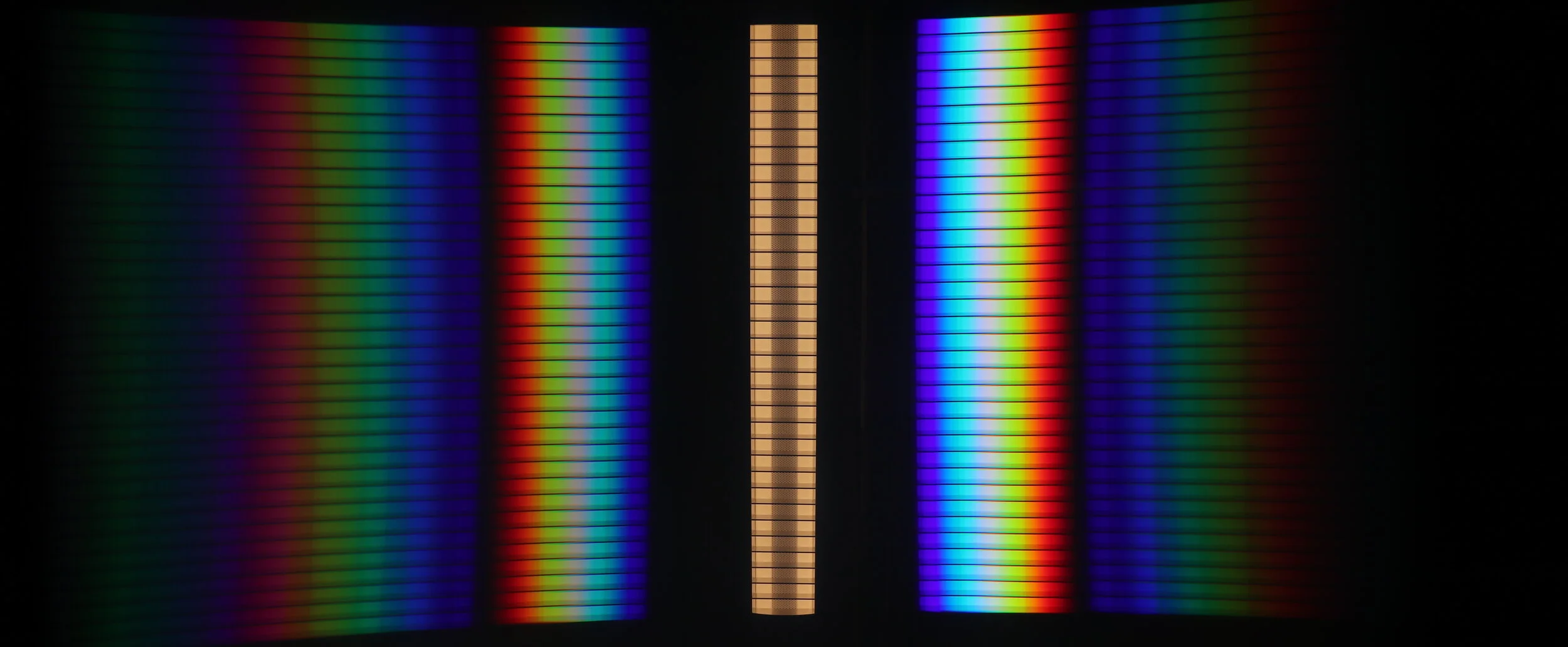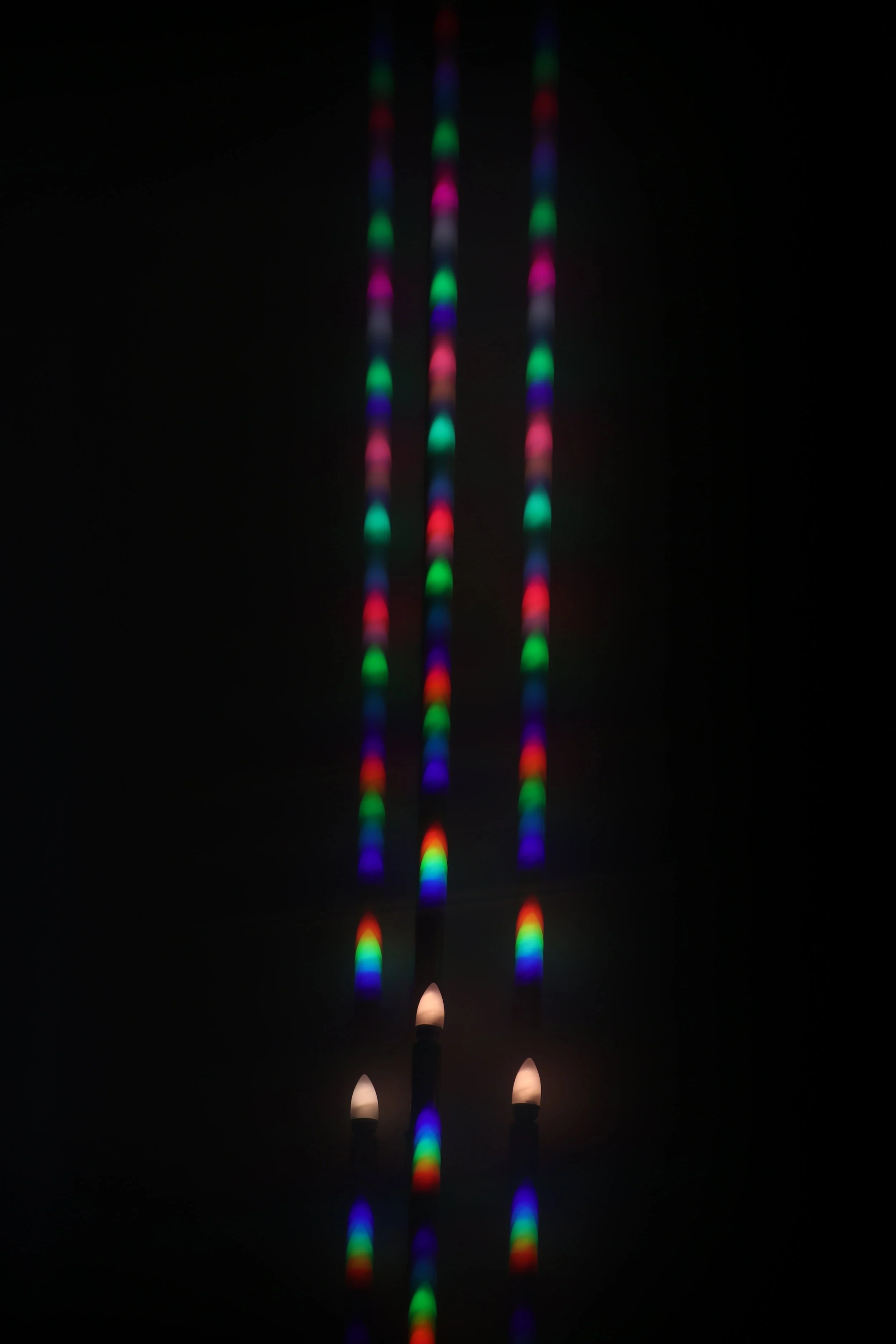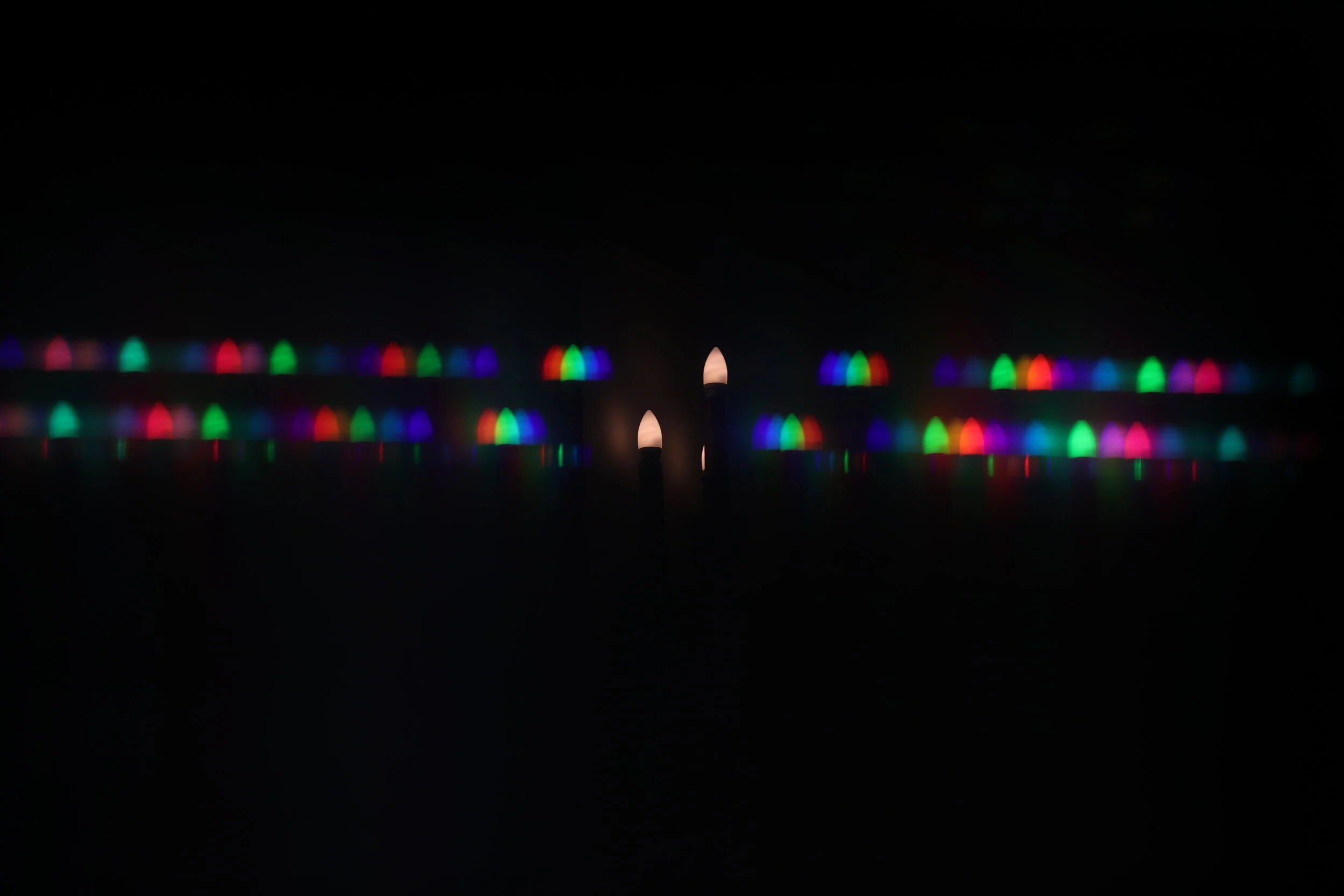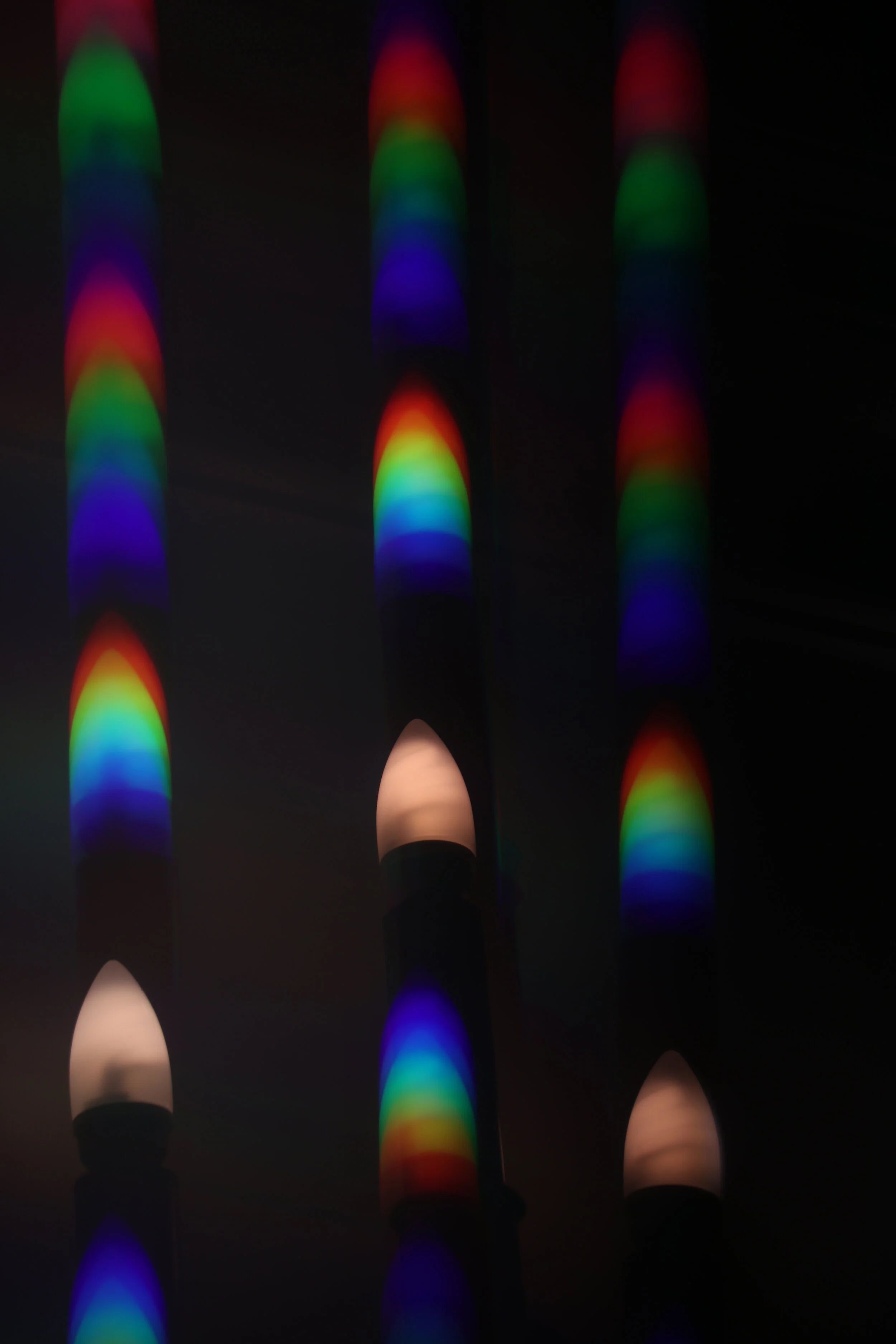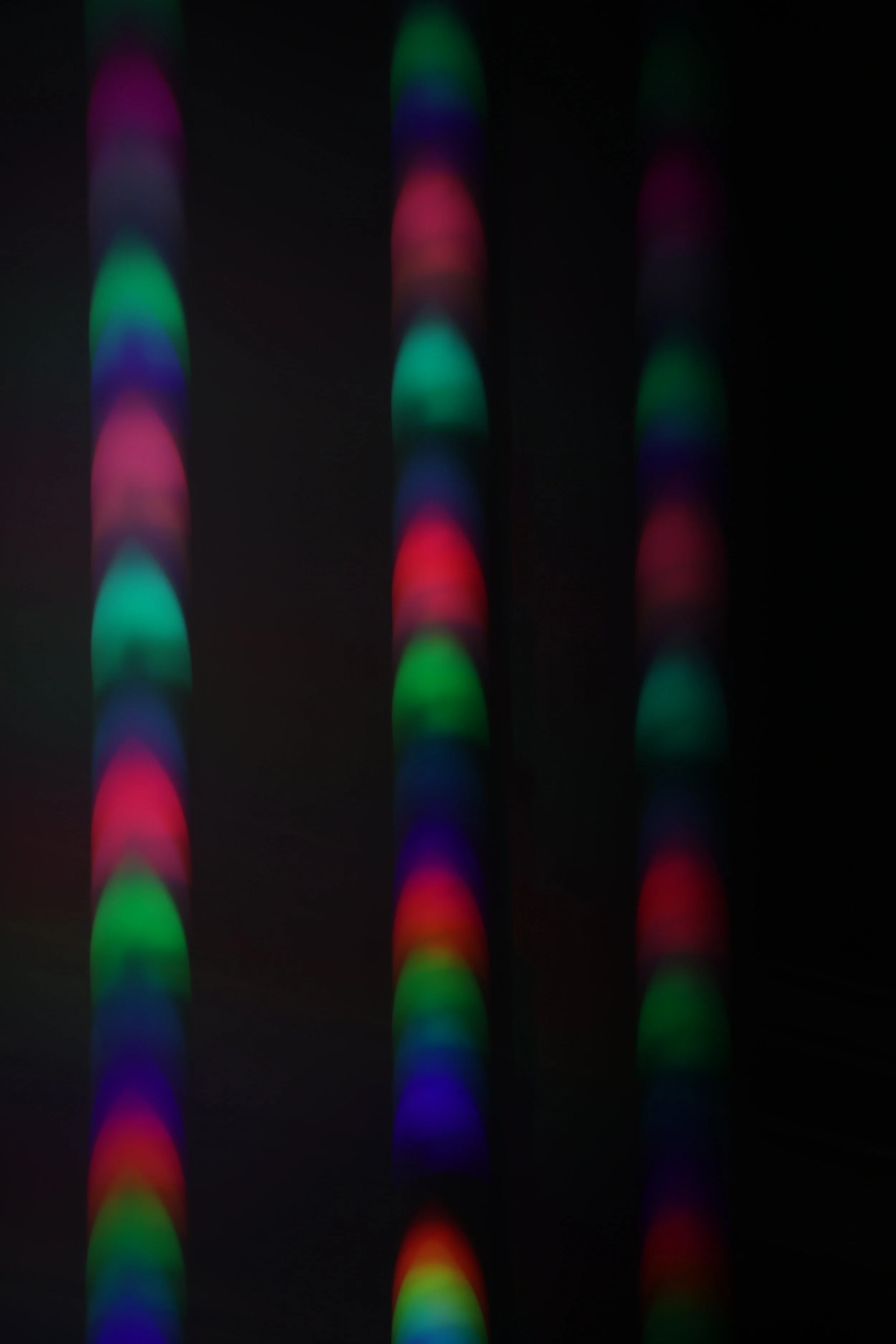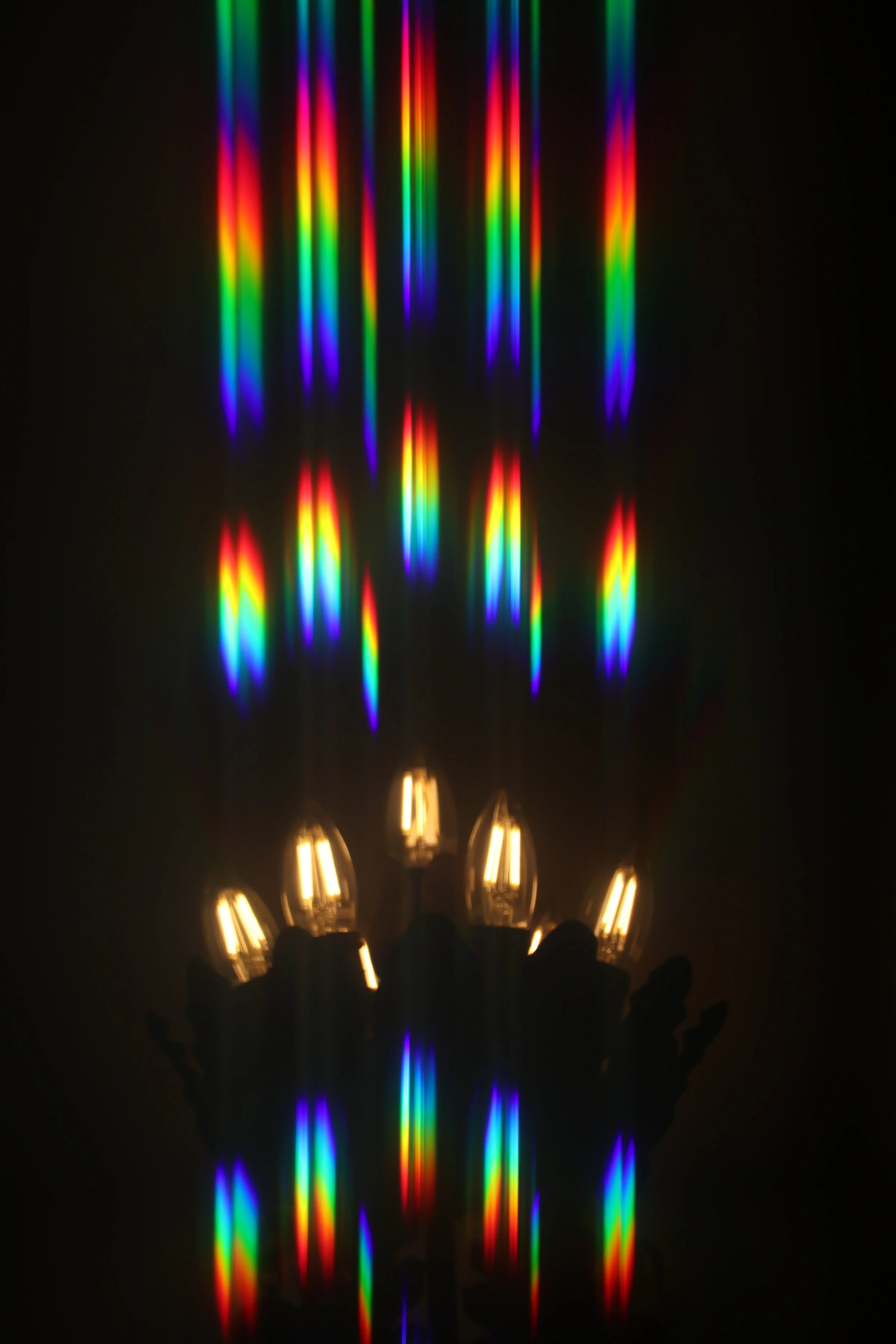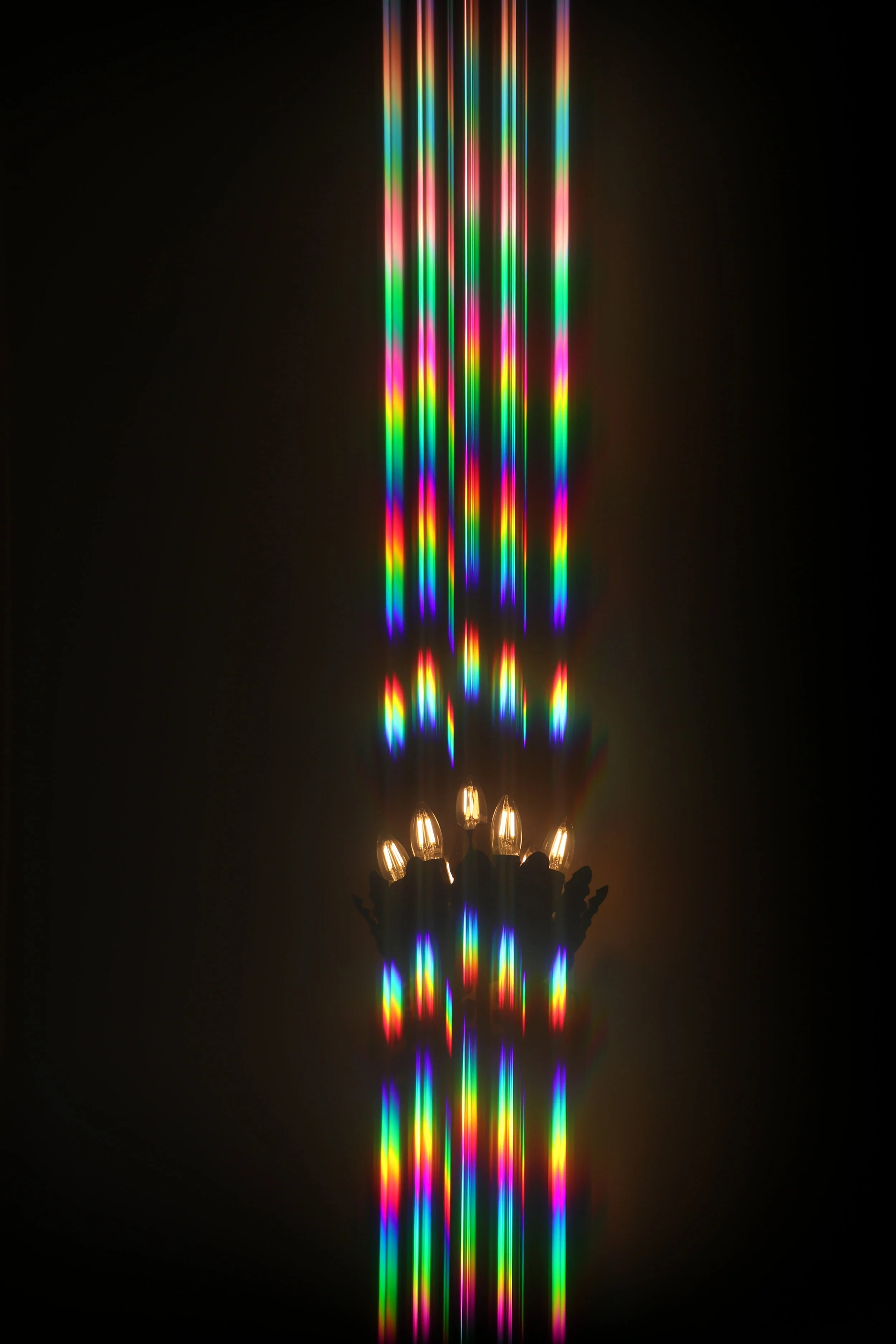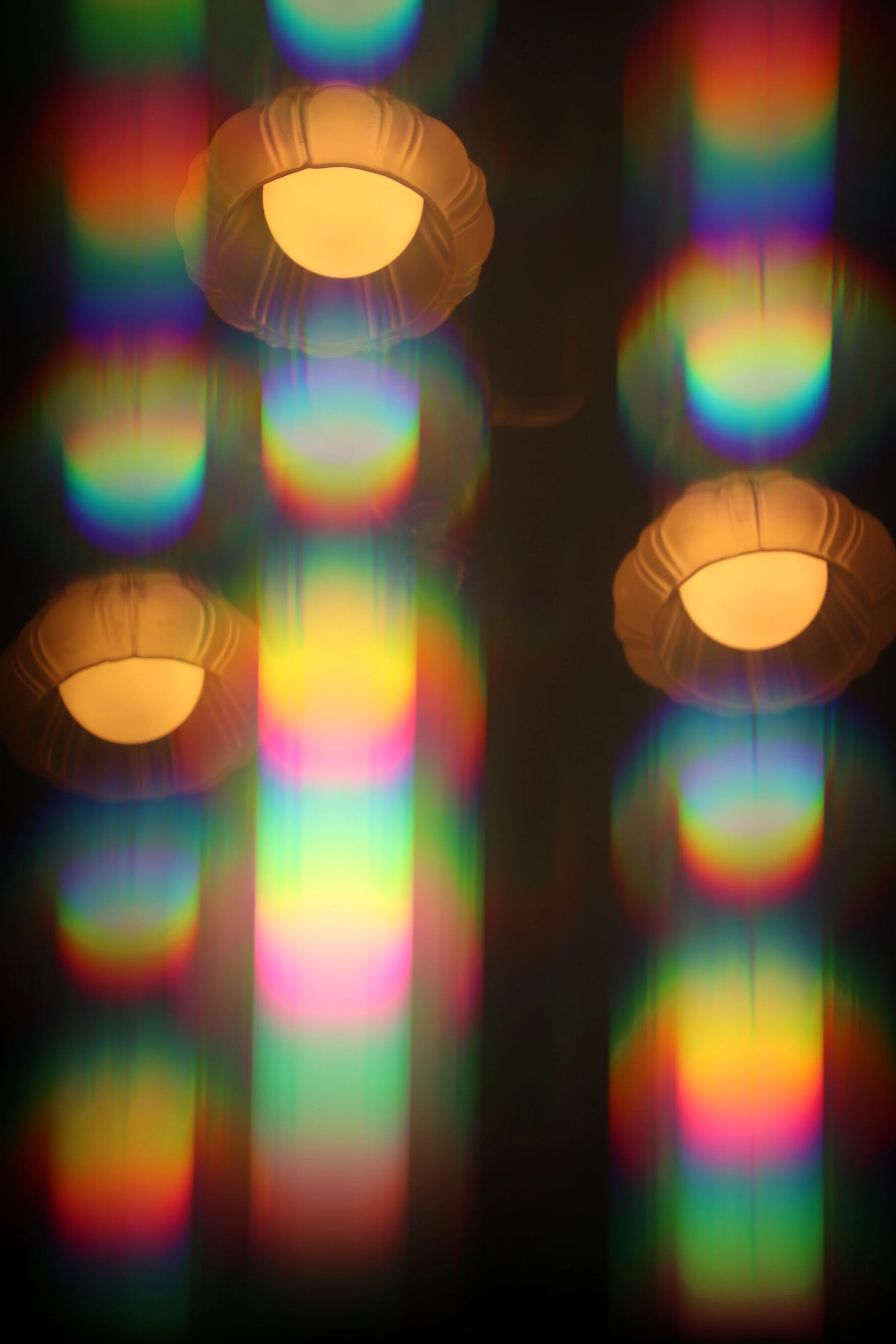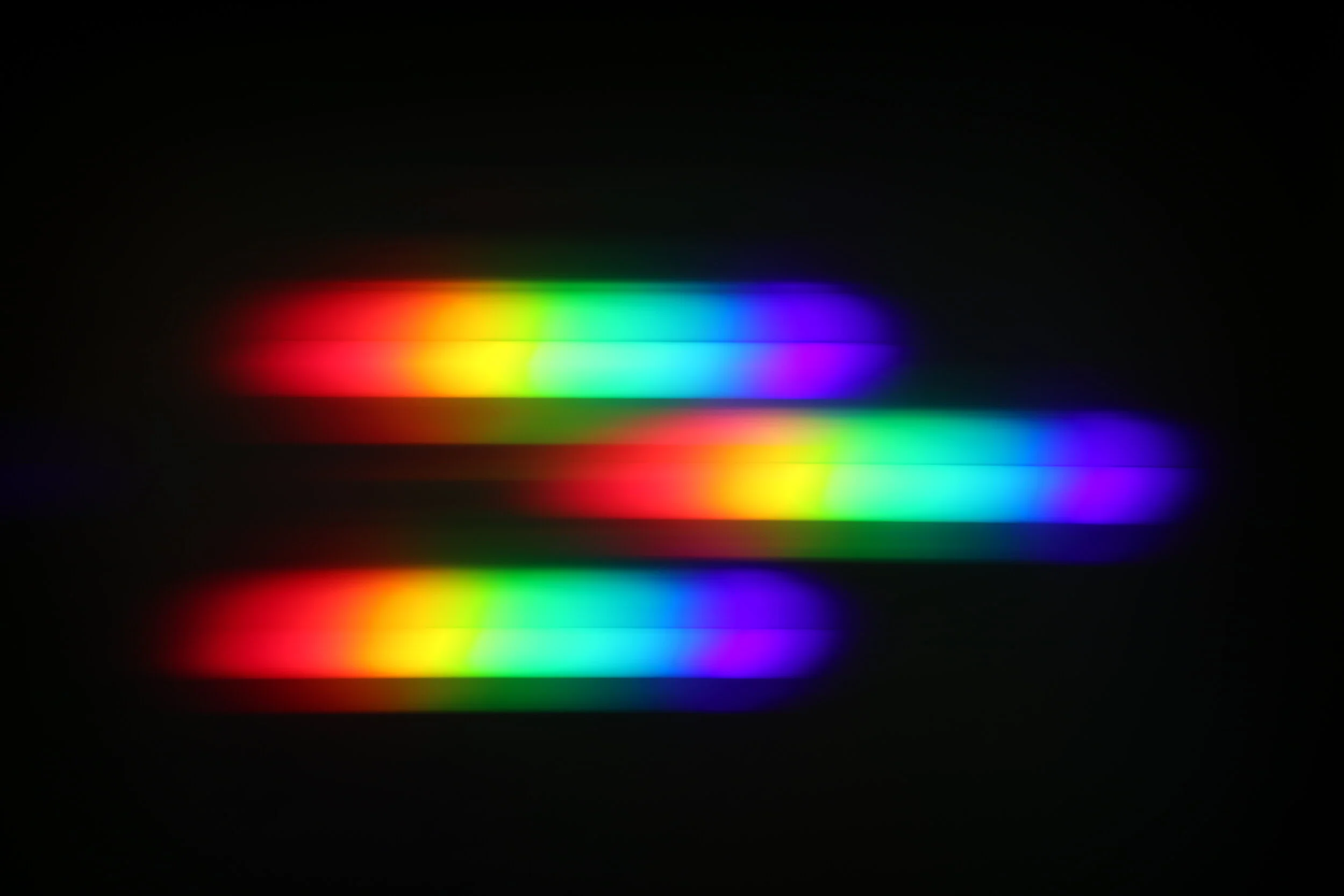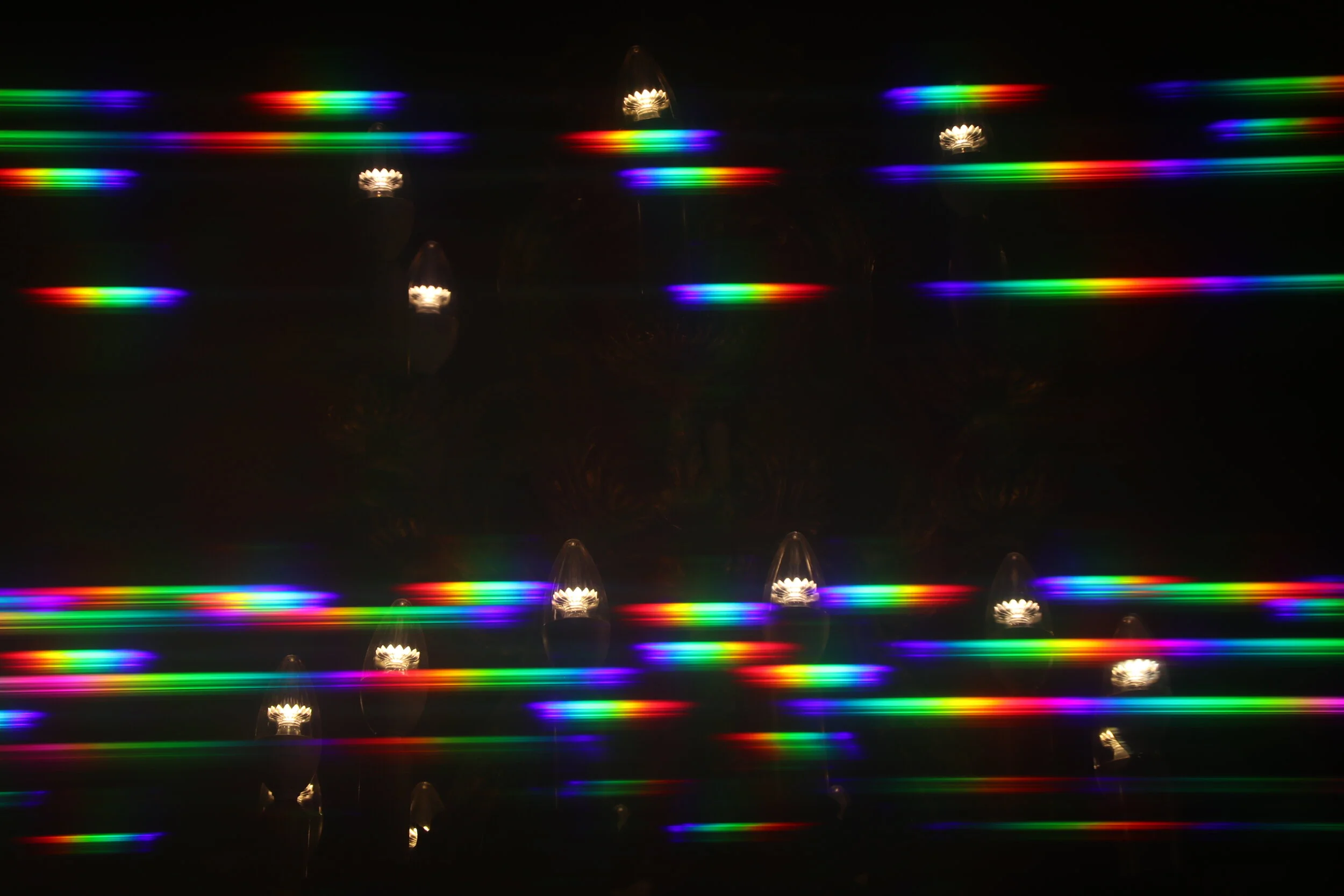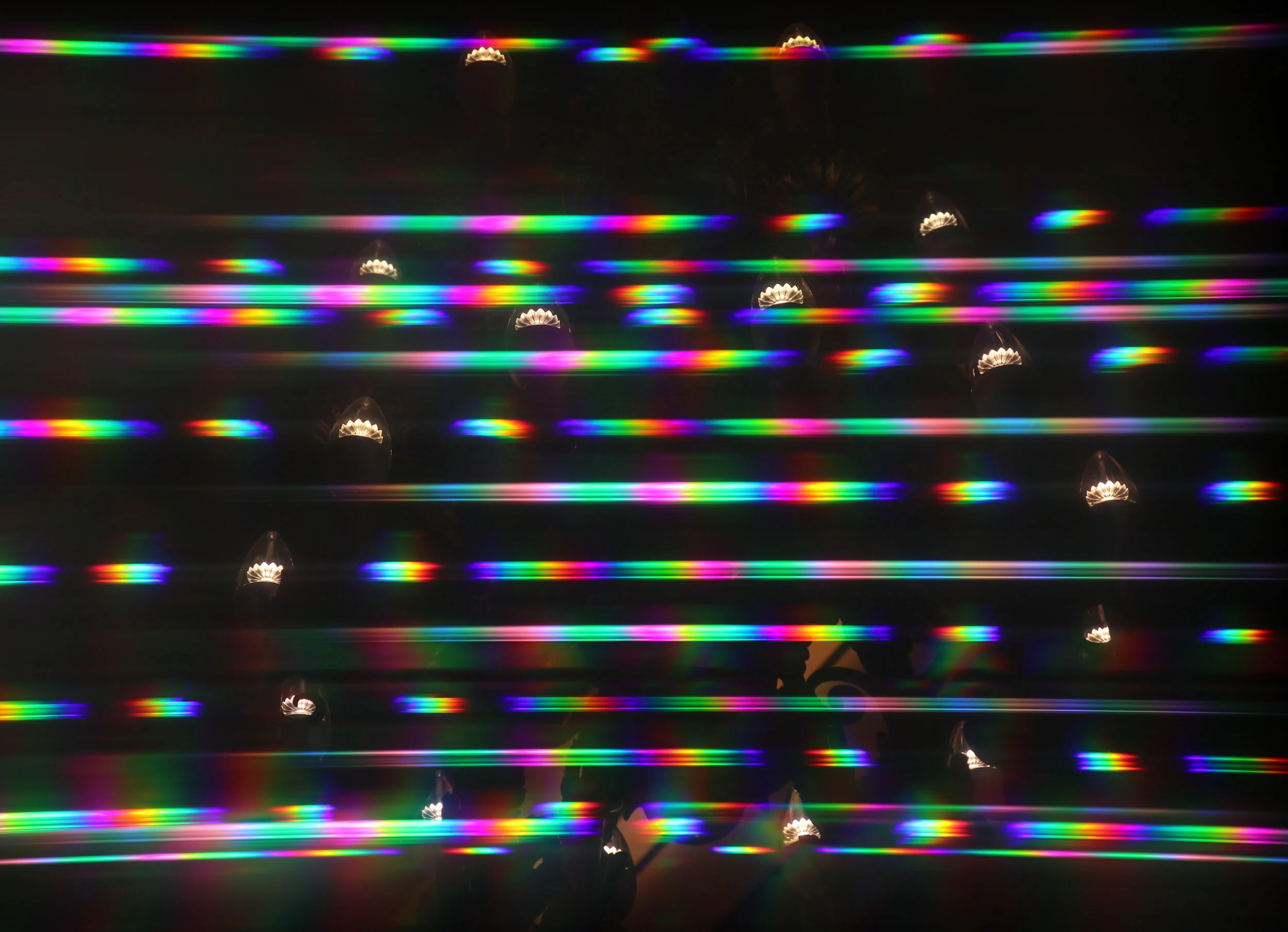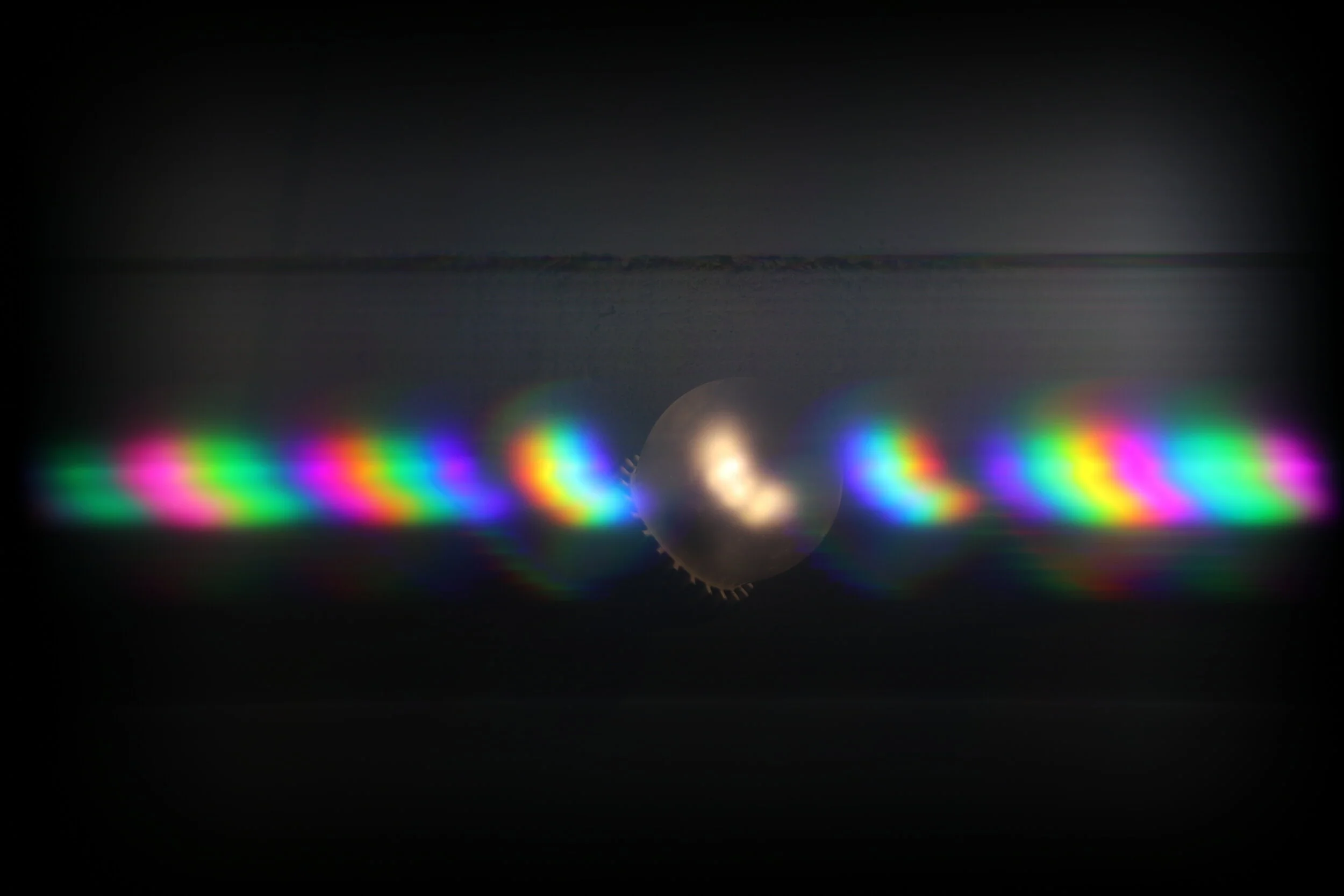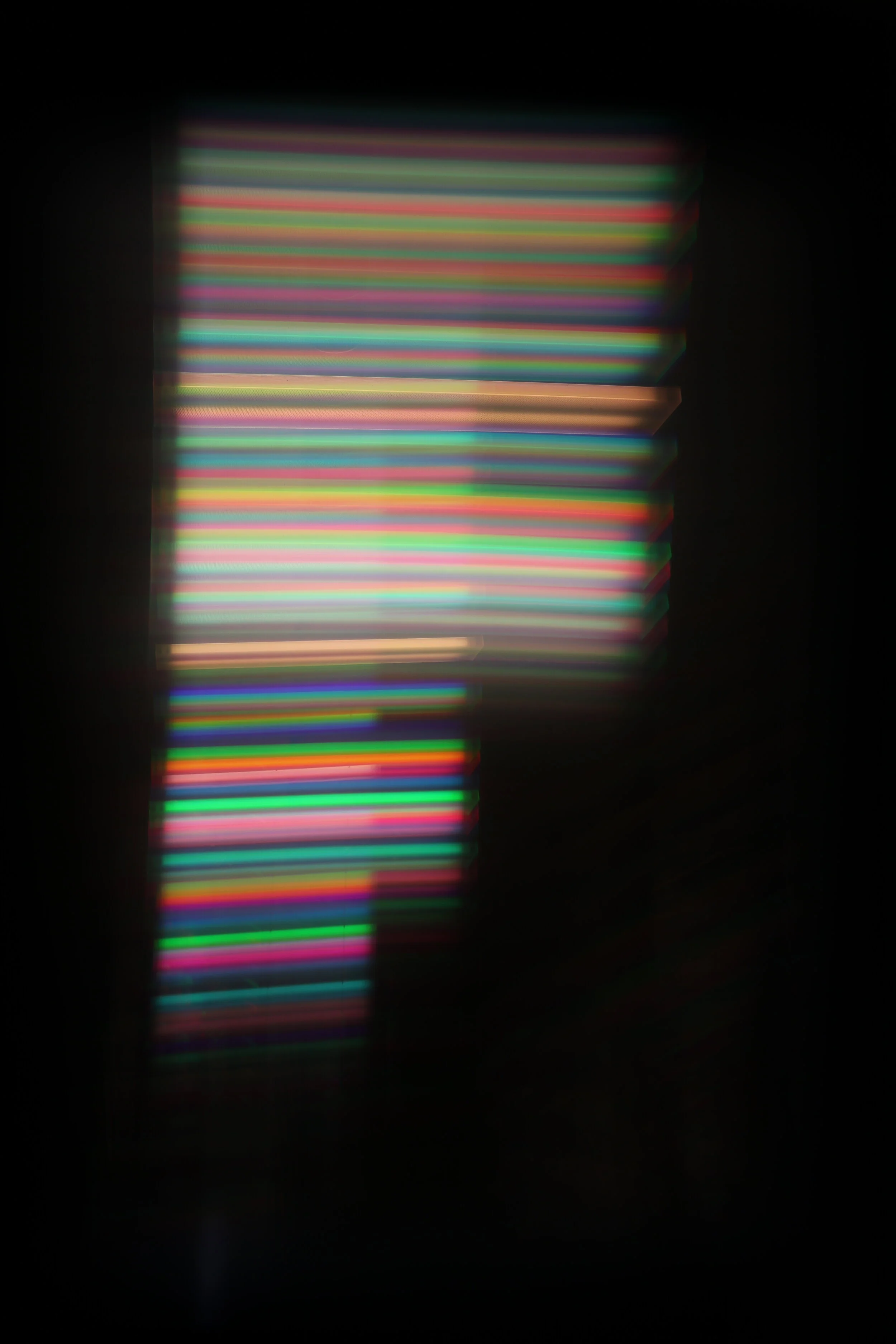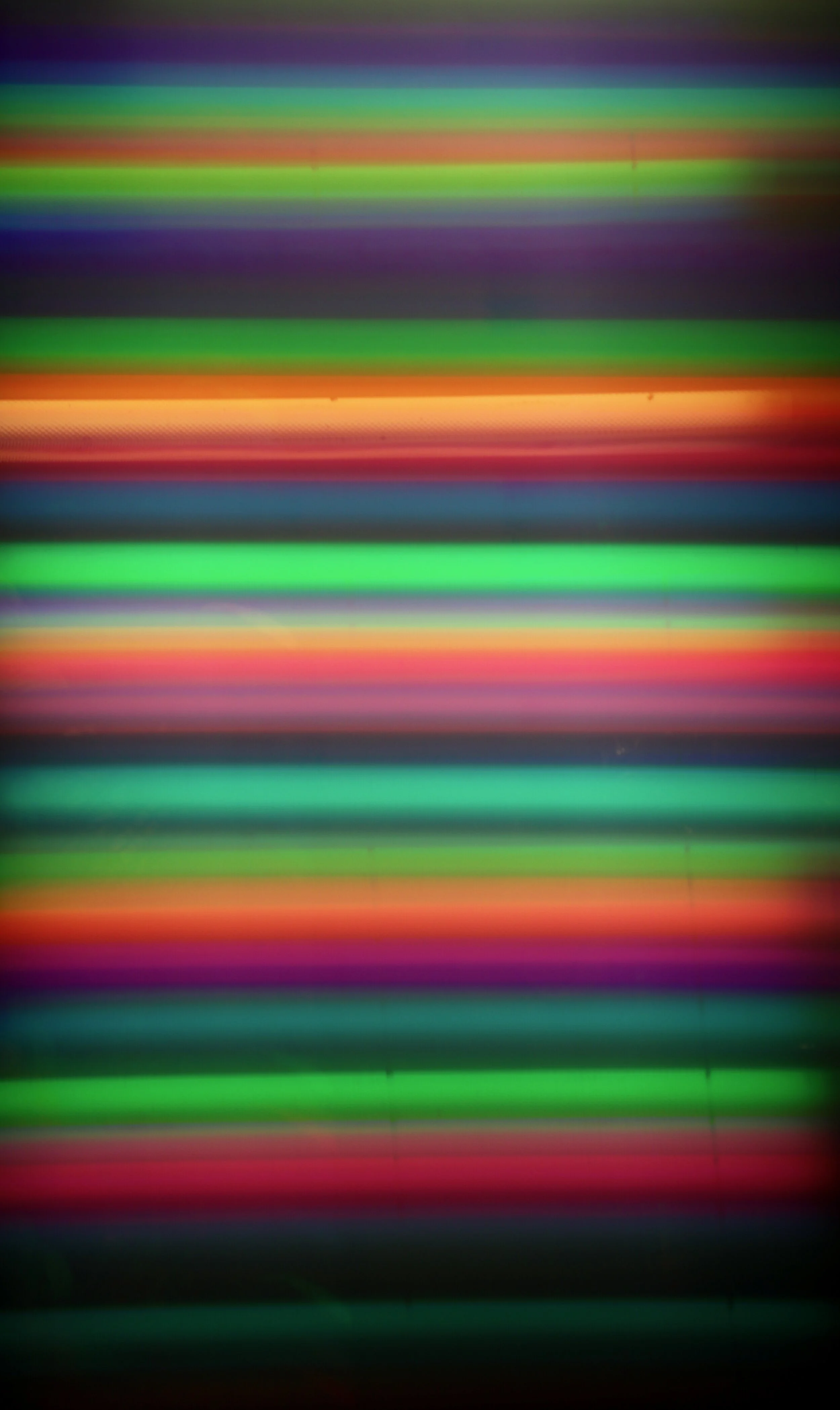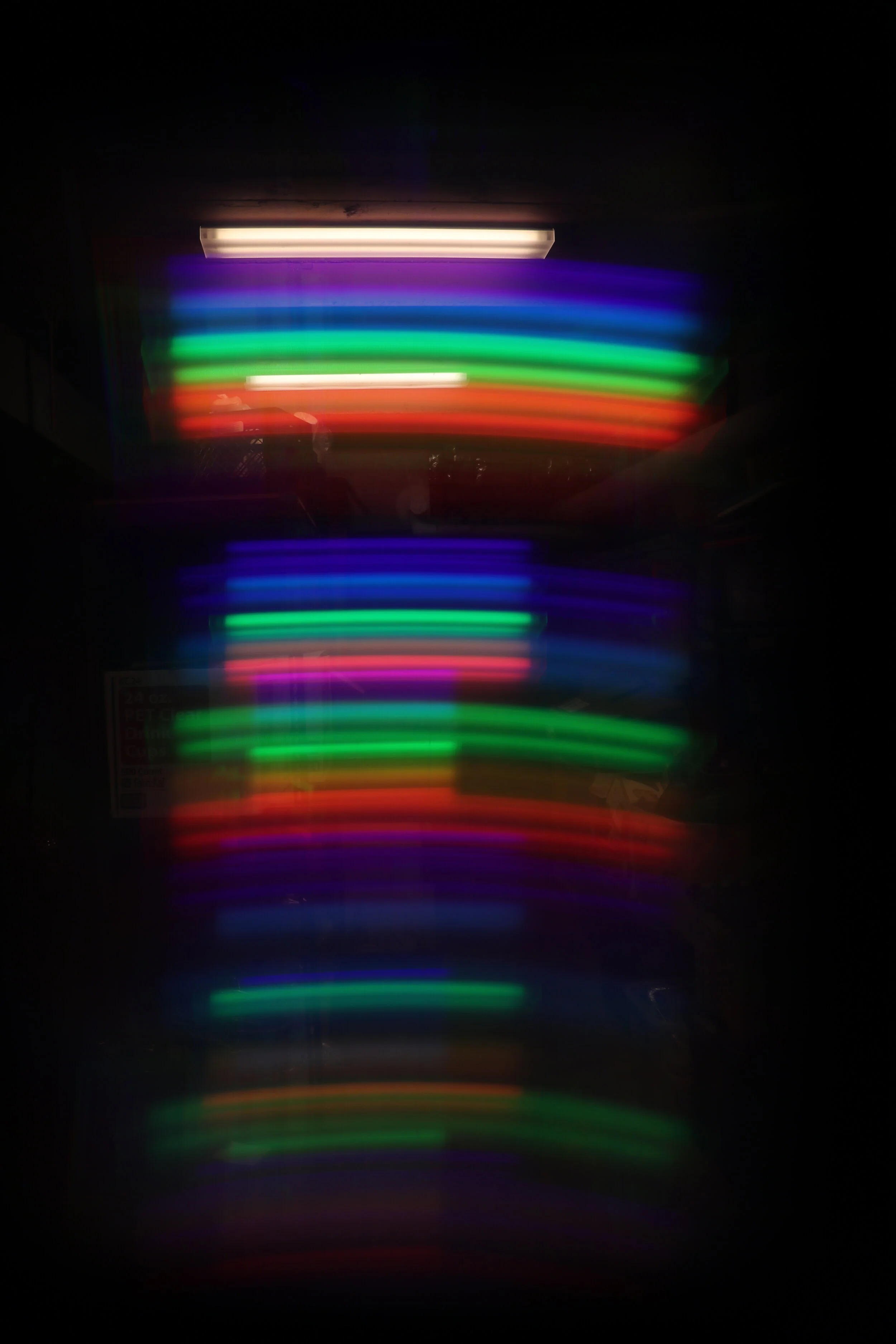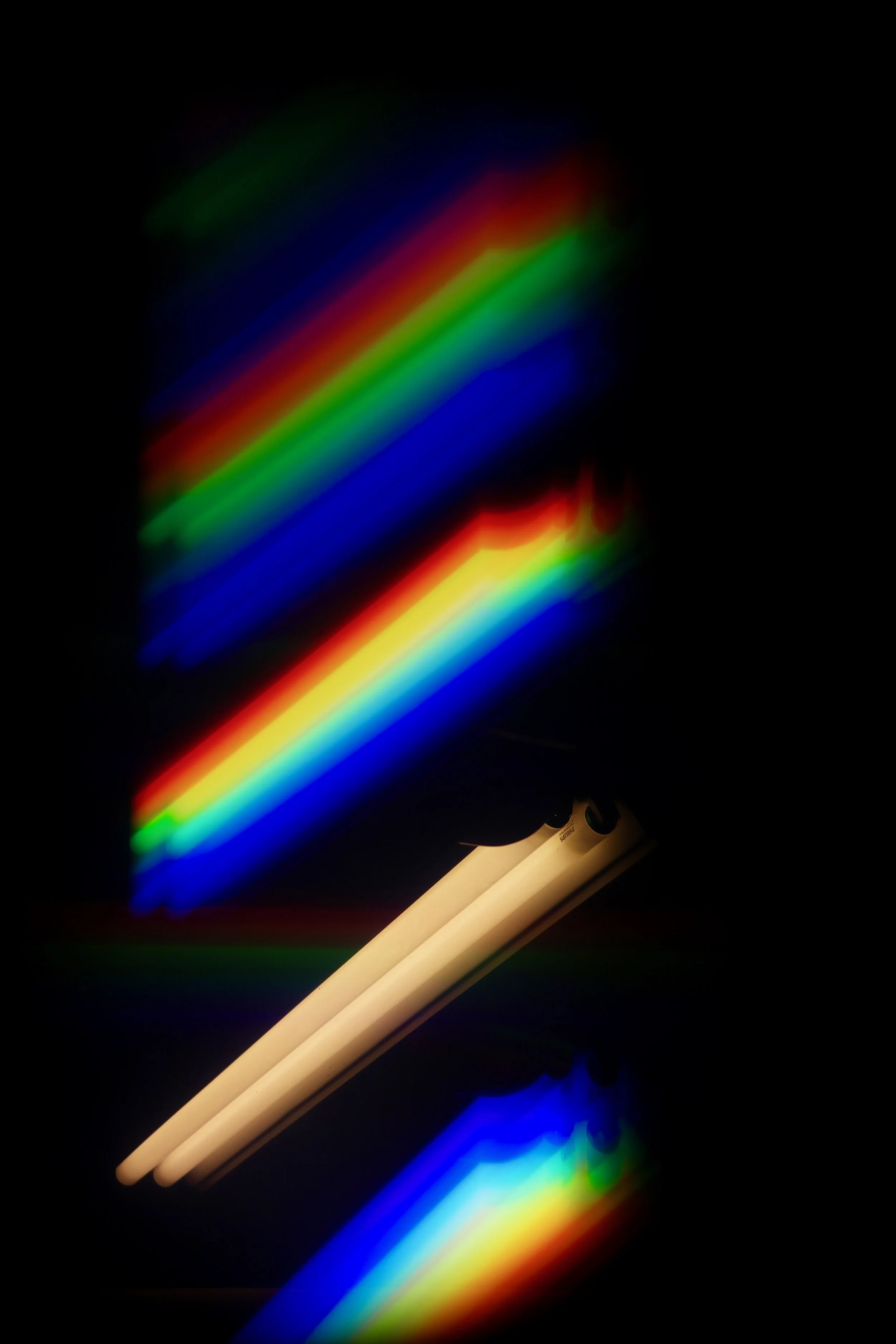Rainbow Ghosts, 2018
I began by working on daily experiments understanding the basic principles of light and physics while reading the book Art and Physics: Parallel Visions in Space, Time, and Light by Leonard Shlain. I explored the three essential questions: How have art movements anticipated and prepared the future of advancements in language, physics, engineering, and technology? How have art and physics both been investigations into the nature of reality? Is it possible to merge these two fields beyond art as an illustrative tool to visualize specific physics equations or concepts? Throughout the semester, my goal was to explore how art and physics can work in tandem.
I became interested in the diffraction interference pattern from the chandelier on the library's LCD TV screen. I used this phenomenon as a springboard to launch into my photography project. For my project, I used different diffraction gratings as filters to take pictures that highlight the different diffraction patterns from white light. A diffraction grating consists of a large number of parallel grooves that function like a supersized double-slit interference pattern creating a diffraction pattern from white light. The quality, number, and spacing of the slots is crucial to the grating's performance, affecting the clarity and separation of the diffraction pattern. I was interested in the simple diffraction concept to highlight the invisible forces around us that only need a small piece of glass with 600 slits to reveal. The process was quite simple. I used multiple different diffraction gratings as filters to capture the diffraction patterns from various light sources.
My goal was to combine physics concepts and art as a tool for visual communication. Art and physics both make the invisible visible, yet through different means of communication. Physics often explains reality with theoretical concepts or mathematical equations; whereas, art communicates through visual illustrations or multi-sensory experiences. Both are valid ways to articulate and define the human experience.
